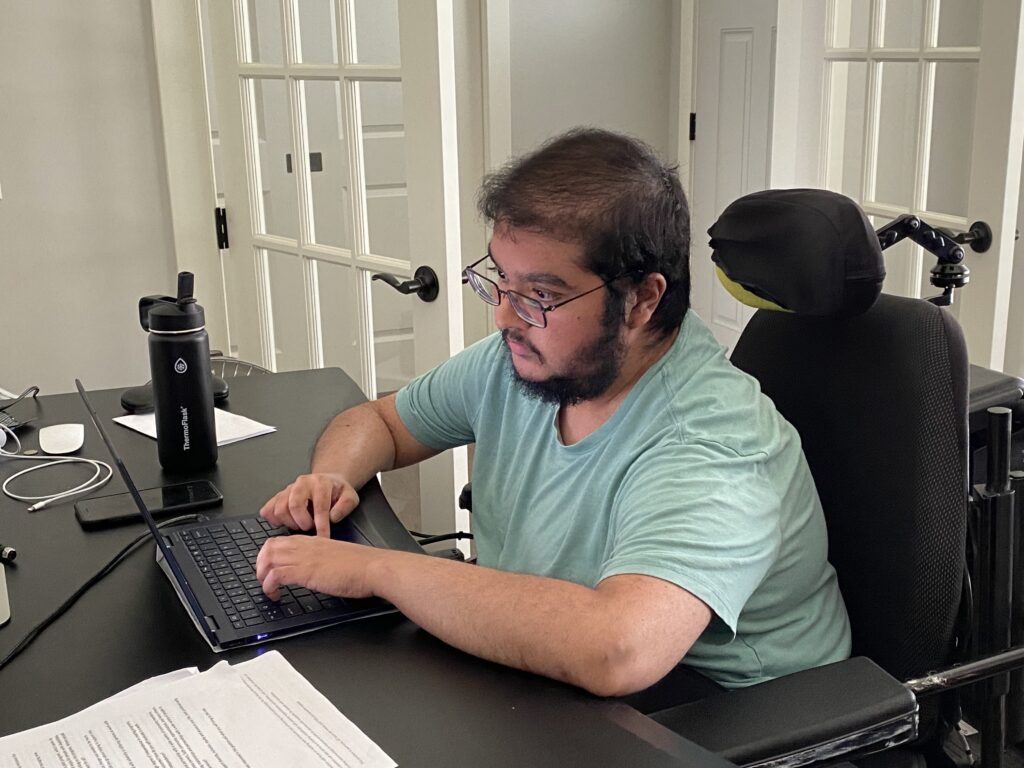 My name is Sumukha Terakanambi, and I am a Policy Consultant with the Minnesota Council on Disability. For the last few years, my goal has been to gain full-time employment as a disability and healthcare policy advocate. In addition to giving me opportunities to pursue what I am interested in, I view employment as a path to achieving more independence, participating in the community, and building financial security. As a person with a disability, I have the desire and ability to work like anyone else. Unfortunately, I – and so many others with disabilities – still face negative stereotypes and systemic barriers when searching for employment.
My name is Sumukha Terakanambi, and I am a Policy Consultant with the Minnesota Council on Disability. For the last few years, my goal has been to gain full-time employment as a disability and healthcare policy advocate. In addition to giving me opportunities to pursue what I am interested in, I view employment as a path to achieving more independence, participating in the community, and building financial security. As a person with a disability, I have the desire and ability to work like anyone else. Unfortunately, I – and so many others with disabilities – still face negative stereotypes and systemic barriers when searching for employment.
This is the fourth in a series of seven blog posts exploring the major barriers to employment for people with disabilities across the state.
- An Overview
- A Lack of Information about Supports
- Stereotypes and Denying Accommodations
- A Lack of Accessible Transportation
- Support Programs that Discourage Work
- A Lack of Legal Supports
- Conclusions
Background
To work, people must be able to get to and from their jobs. Unfortunately, there are very few options for accessible transportation in Minnesota, especially outside the Twin Cities Metro area. As a result, many people with disabilities miss out on job opportunities in the community. This blog post will explore some major challenges in accessing safe, reliable, accessible, and timely transportation while offering potential policy changes to address these challenges.
Barriers to Accessible Transportation
There are several barriers to accessible transportation. These include:
- Paratransit services like Metro Mobility are often unreliable (PDF).
- Low reimbursement rates (PDF) do not always cover transportation costs.
- On-demand transportation options like Uber or Lyft do not provide wheelchair-accessible vehicles.
Many of the people with disabilities I interviewed were very candid about the challenges they have experienced with transportation. Sophie Iverson, an options counselor at the Disability Hub and a self-advocate, is certified to use Metro Mobility. However, she is reluctant to use the service because it is unreliable.
Blong Moua, a self-advocate and participant in Partners in Policymaking who currently uses Metro Mobility to get to his day program, expressed similar concerns. He said that the service has shown up late for a ride, even though it is against their policy to do so.
Brittanie Hernandez Wilson, the Equity and Justice Director at Arc Minnesota, mentioned that people with disabilities in rural areas have more difficulty getting to their jobs, especially during winter.
Possible Solutions
Policymakers have made some progress on this front. In the last legislative session, lawmakers worked to pass a bill that would fund a Metro Mobility enhancement pilot program to expand service hours. It would pay part of the fare for an accessible taxi service outside the traditional service hours. Thanks to a policy change implemented earlier this year, PCAs (Personal Care Assistants) can now drive their clients in the community. While these changes expand transportation options for people with disabilities, there are other changes the legislature should consider.
- Require Transportation Network Companies (TNCs) to provide wheelchair-accessible vans through driver incentives. Lawmakers this session finally reached a compromise and passed a bill that would increase driver rates and provide an enhanced rate for drivers who modify or purchase wheelchair-accessible vans.
- Appropriate funds to improve reimbursement rates for transportation services that provide services under Medical Assistance waivers. The state should use these funds to increase the monthly allocations for transportation costs.
- Appropriate funds to the Metropolitan Council to make technological improvements, purchase more vehicles, and offer drivers better wages to address workforce needs.
Conclusion
Without adequate and reliable transportation, it is difficult for people with disabilities to find and maintain competitive employment. Policymakers must continue to address this issue and ensure Minnesota offers accessible transportation options.